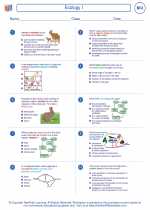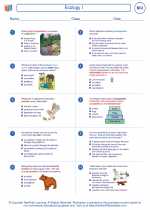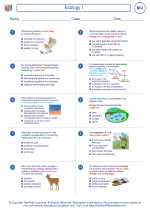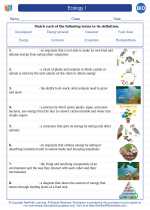Magnetism
Magnetism is a natural phenomenon that occurs when certain materials exert attractive or repulsive forces on other materials. This property is due to the alignment of the magnetic moments of the atoms within the material.
Types of Magnets
There are three main types of magnets:
- Ferromagnets: These are materials that are strongly attracted to magnets, such as iron, cobalt, and nickel.
- Paramagnets: These materials are weakly attracted to magnets, such as aluminum, platinum, and oxygen.
- Diamagnets: These materials are weakly repelled by magnets, such as copper, silver, and carbon.
Magnetic Fields
A magnetic field is the area around a magnet where its force can be detected. The magnetic field is strongest near the magnet and becomes weaker as you move away from it.
Magnetic Poles
Every magnet has two poles - a north pole and a south pole. Like poles repel each other, and opposite poles attract each other.
Electromagnetism
When electric current flows through a conductor, it produces a magnetic field. This principle is used in electromagnets, which are temporary magnets that only exhibit magnetism when an electric current is flowing through them.
Study Guide
When studying magnetism, it's important to understand the following key concepts:
- The properties of ferromagnets, paramagnets, and diamagnets
- The behavior of magnetic fields and how they interact with magnets
- The concept of magnetic poles and how they attract or repel each other
- The relationship between electricity and magnetism in electromagnets
It can also be helpful to conduct hands-on experiments to observe the behavior of magnets and their interactions with different materials. Additionally, practicing with magnetic field diagrams and understanding the applications of magnetism in everyday life, such as in electric motors and generators, can enhance your understanding of the topic.
Remember to review the key vocabulary associated with magnetism, such as magnetic field, magnetic poles, and electromagnetism, to ensure a comprehensive understanding of the subject.
[Magnetism] Related Worksheets and Study Guides:
.◂Biology Worksheets and Study Guides High School. Ecology I

 Worksheet/Answer key
Worksheet/Answer key
 Worksheet/Answer key
Worksheet/Answer key
 Worksheet/Answer key
Worksheet/Answer key
 Vocabulary/Answer key
Vocabulary/Answer key
 Vocabulary/Answer key
Vocabulary/Answer key
